The Three Dangerous Magi: Osho, Gurdjieff, Crowley, examines the lives, teachings, and influence of three of the most controversial, important, and interesting 'crazy wisdom' teachers of the 20th century. It was published by O-Books (now Axis Mundi Books) in December 2010 and is available in major bookstores and via Amazon.
Despite the consistent focus and research required to produce a work like this (230,000 words and 714 pages), ultimately it was not hard for me to write, because the subject matter is absorbing and juicy (in contrast to the repetitive dryness of so much of the written material concerning transformational inner work). Crazy-wisdom type teachers, at least those of an impactful and influential nature, are profoundly interesting, if only because they run counter to the mass doctrines of religious programming that in large part is concerned with dividing human beings inwardly via a morally simplistic dualism. This simple-mindedness shows up a great deal in so-called 'new age' teachings, with their tiresome 'warriors of the light' mentality and tendency to perpetuate standard Christian programming that ultimately reinforces the repression of the nastier, more hidden elements of the ego (what Jung called the 'shadow', essentially). The Great Work lies in the uniting of Opposites (a work that often is necessarily antinomian), and more subtly in the embracing of paradox, not in 'division for morality's sake'. I address some of these matters in my book Rude Awakening.
As to the matter of what exactly 'crazy wisdom' is, the term technically derives from the Tibetan yeshe cholwa, which means roughly 'wisdom gone wild'. The Indian equivalent of the Tibetan crazy wisdom teacher is the avadhuta, a term that refers to a wandering mystic who flaunts social conventions and whose concern with awakening transcends moral frameworks. The best two treatments of this difficult subject I am aware of are Chogyam Trungpa's Crazy Wisdom and Georg Feuerstein's more scholarly Holy Madness.
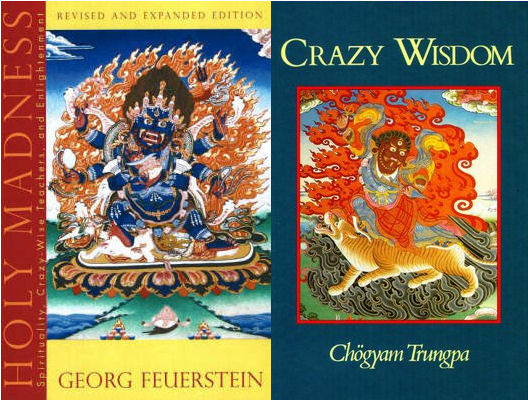
Trungpa's work is that of an adept speaking (a transcription of talks he gave during a retreat in the early 1970s). Feuerstein's work is that of a scholar, and is penetrating, as are all his works. In Holy Madness he devotes short sections to Osho, Gurdjieff, Crowley, Lee Lozowick, Satya Sai Baba, the madman Soko Asahara, his own main 'crazy wisdom influence' Adi Da Samraj, and also discusses the famed Tibetan 'wise wildman' Drukpa Kunley. His remarks on Crowley are interesting:
Aleister Crowley, a contemporary of Gurdjieff, was as much of an eccentric. Unlike Gurdjieff, however, Crowley's eccentricities caused such an uproar that negative media attention tended to overshadow his genuine magical as well as spiritual experiments. Yet, he was more influential during his lifetime than Gurdjieff, whose fame started to spread only after his death. Crowley must be counted among the most advanced magi to emerge in the West, alongside Giuseppe Balsamo (Count Cagliostro) and Count Saint-Germain in the eighteenth century, and Eliphas Levi and Madame Blavatsky in the nineteenth century. The reason for Crowley's notoriety was his voracious hedonism, promiscuous sexuality, his liberal advocacy of drugs, and his declared antinomian philosophy, which he equated with left-hand Tantra, The news media and some biographers made him out to have been a depraved monster -- an image he seems to have encouraged. The Swiss writer Henri Birven said of Crowley: 'The life of this "magus" is a tragicomedy of great proportions, which can only be appreciated by very few connoisseurs.' (Feuerstein, p. 116)
For a more clinical study of the phenomenon of radical or avant garde gurus (which includes, in addition to the usual suspects like Gurdjieff and Osho, studies of Jesus, Freud, and Jung, all of whom, the author persuasively argues, were also gurus), see Anthony Storr's Feet of Clay: Saints, Sinners, and Madmen.
There are a few glitches with The Three Dangerous Magi: on a structural level, it lacks an index (I ran out of space, time, and admittedly, energy. A second edition, which will probably appear in a few years, will have one). While I think the cover of the book is appealing -- it features what looks very much like a Maulshree tree, the same type of tree Osho claimed to undergo his enlightenment under in the middle of the night somewhere in central India on March 21, 1953 -- it would doubtless be stronger if it featured photos of the three men. I did not include photos as I was led to believe that there was a copyright issue with Osho's photos, but I have since found out that is not true. (The second edition will have photos).
Re the content of the book, I made the decision to begin it with three capsule biographical outlines of the three men, elaborating on elements of their life in greater depth in subsequent chapters. That said, each man is easily worthy of a thousand page biography alone, so condensing all three into 714 pages meant that some detail was sacrificed in the name of focusing on salient issues. For the full story of Crowley's life, one should consult Richard Kaczynski's Perdurabo, especially the most recent edition (2010, North Atlantic Books), which is produced in a handsome hardback with a multitude of photos. (A quirkier, but very interesting take on Crowley's life is Israel Regardie's The Eye in the Triangle, and Tobias Churton's biography on the Beast is also a worthy read). I also recognize that my discussion of Crowley's sex magick was entirely introductory, and not more; I intentionally avoided giving more space to that subject as there was too much ground to cover on other matters. The book is primarily for the informed general reader, especially for those not deeply acquainted with at least one (or more) of the three men. I will be producing an article on Sex Magick/Tantra for this website soon.
On the matter of Gurdjieff, there is a technical error in the book in Chapter 2 where I mention that Ouspensky witnessed the performance of Gurdjieff's ballet 'Struggle of the Magicians'. In fact this ballet was never performed; Ouspensky witnessed some other of Gurdjieff''s sacred dances. Similar to Crowley, I was all too aware of the omissions of details of Gurdjieff's equally rich biographical journey. The interested reader is advised to seek out J.G. Bennett's Gurdjieff: Making a New World, or James Moore's Gurdjieff: The Anatomy of a Myth as the pre-eminent biographies of his life. For a look into Gurdjieff's complex relationship with his famous student P.D. Ouspensky, William Patrick Patterson's Struggle of the Magicians is best.
As for Osho, I had written in the book that he had 'never mentioned Crowley' in his two decades of daily discourses, but in fact he did, albeit very briefly, in 1977, in a Darshan Diary later published under the title The Buddha Disease. This latter was pointed out by an Osho disciple who posted at LAShTAL.com a few months after The Three Dangerous Magi was released. Also, I would be remiss to not mention that I refer in the book (in Chapter 10) to an Oregon congressman, Jim Weaver, who reported his discovery of 'nitrous oxide spigots' by Osho's bedside after Osho had vacated his Rajneeshpuram residence in Oregon. What I neglected to add is that these spigots may simply have been for Osho's asthma; in addition, Weaver has been shown by other erroneous claims to have not been a credibly unbiased observer. (This does not negate the reality that Osho used nitrous oxide, that is indisputable. The unresolved question is to what extent he did. The accompanying question, of course, is to what extent the whole matter is even relevant. These matters were certainly not meant to be resolved in the book, but rather to operate as 'reflective tools' to enable us to examine our own inner process).
As someone who was an Osho disciple for many years while the master lived, I recognize that my doubting of Osho's 'full enlightenment' (as I state at the close of Chapter 3) renders me a heretic in orthodox sannyasin eyes, and one might also question how many times I cite the psychiatrist Anthony Storr in Chapter 3, regarding Osho's awakening process in 1953, but I think the need for all students of Osho's work to lean toward an evolutionary edge -- something that frequently involves questioning the 'unquestionable' -- far transcends sentimental loyalism. This applies equally for Thelemites and students of the Gurdjieff Work. 'All this and more you shall accomplish'.
As for biographies on Osho, as I mention in the book these are mostly divided between the apologists and the cynics. There are hardly any comprehensive treatments of his life that seek out some sort of objective ground (my own work may be one of the few, though most would see me leaning more toward the apologist's camp). Best of the lot is Sam's Life of Osho, written by a former disciple who was deeply familiar with and sympathetic toward the master and his work, but who maintained some sense of a critical eye. Vasant Joshi's recent effort The Luminous Rebel (2010) is perhaps the first full biography on Osho to emerge in a long time. It is written with great sincerity and affection, but is the work of a devotee, and as such lacks any critical appraisal. I remain somewhat astonished at the utter dearth of objective biographies on this man, as his life and teaching is every bit as substantial, edgy, and interesting as that of Crowley and Gurdjieff, and he was more influential in a broader way. I predict that these biographies will be coming. Most biogs on Crowley appeared (outside of John Symonds' work) between 25 and 60 years after his passing. The best biogs on Gurdjieff appeared between 30 and 50 years after his passing. If that trends holds for Osho, major studies of his life should be around the corner, given that he passed on in 1990. It seems to take about the length of time for one to two generations to move on, or up to an older age bracket, to properly evaluate larger than life characters.
There were some omissions in the Acknowledgments, most glaring of which was my failure to mention The Aleister Crowley Society, which via its excellent website (LAShTAL.com) I obtained many useful insights and dialogue. Chapter 13 of the book, devoted mostly to the famous encounter between Crowley and Gurdjieff in 1926, was in part influenced and shaped by some of my dialogues on the Society's message board in the summer of 2009. In addition, I failed to acknowledge my friend Swami Parva, who provided me with some useful information on Osho and Gurdjieff. Also deserving mention was my old friend and long time Ordo Templi Orientis initiate Vince Evans, who first introduced me to Crowley back in 1975 while high school buddies in Montreal, and Edward Fanaberia, my first teacher in the Gurdjieff Work (1982) and probably my first legitimate spiritual guide.
The matter of 'dangerous magi' has not been entirely understood. 'Dangerous' refers, of course, to 'danger' to the status quo (particularly to established religious doctrine, and the need for 'three new wise men' to bear witness to a 'new star' in a highly dangerous time), and more subtly, to the risks involved in keeping company with such teachers -- although as should be clear from my writing in the book, I am of the view that such 'danger' is chiefly to one's own ego and its precious needs to control one's small world. There were certainly other 20th century 'dangerous' teachers, any one of whom is worthy of a full length study: U.G. Krishnamurti, Adi Da Samraj, Chogyam Trungpa, Lee Lozowick, and further back in time, rogues like Blavatsky, Mathers, Leadbeater, and Rasputin. The matter of 'hidden fellowships' is something I see largely as teaching-allegory, but is a worthy area of study for any drawn in such a direction. I may write about such matters more fully in the future, but for now the reader could do worse than by looking at J.G. Bennett's The Masters of Wisdom, or Ernest Scott's The People of the Secret.
All said, I am satisfied with The Three Dangerous Magi, and the feedback I've gotten on it thus far has been almost unanimously positive. For many years I ran personal growth communities (inwardly mystery schools, outwardly social environments to support inner awakening), and have always had passion for bringing things together. The 'crazy wisdom' teachers in particular can be difficult to 'bring together', and it is perhaps presumptuous to even try to owing to their intensely charismatic individuality, but I believe there is merit in such attempts, if only to counter the silly distortions and lazy projections the lives and work of such teachers are so commonly subject to.
(I plan in the future to write in some detail about my own life story, which contains more than its share of 'crazy wisdom' (not to mention both breakthrough, and outright folly), and a journey that has enabled me to be part of some very dramatic matters, but I have, let us say, a few more books to get out of my system first).
Table of Contents
Preface
Introduction
Part One: Biographical Outlines
Chapter 1: Aleister Crowley: Wicked Magus
Chapter 2: G.I. Gurdjieff: The Black Devil of Ashkhabad
Chapter 3: Osho: The Most Dangerous Man Since Jesus Christ
Part Two: Teachings
Chapter 4: Crowley’s Magick and Thelema
Chapter 5: The Gurdjieff Work
Chapter 6: Osho’s Teachings
Part Three: Commentaries
Chapter 7: Kings of the Night
Chapter 8: Self-Perfection and the Myth of the Infallible Guru
Chapter 9: The Spiritual Commune: Paradiso and Inferno (Part I)
Chapter 10: The Spiritual Commune: Paradiso and Inferno (Part II)
Chapter 11: Of Women and Sex
Chapter 12: Of Drugged Sages, Drunken Idiots, and Mysterious Deaths
Chapter 13: Magical Warfare
Chapter 14: Transmission and Legacy
Chapter 15: Return of the Magi: Of Rogues, Prophets, and Prophecy
Part Four: The Inner Work
Chapter 16: The Importance of Practice
Chapter 17: Practice from Osho's Work
Chapter 18: Practice from Gurdjieff's Work
Chapter 19: Practice from Crowley's Work
Part Five: Historical Influences
Chapter 20: Historical Influences on Crowley's Magick and Thelema
Chapter 21: Historical Influences on the Gurdjieff Work
Chapter 22: Historical Influences on Osho's Teachings
Appendix I: The Osho-Crowley Parallels
Appendix II: Crowley and Chess: the Royal Game and the Inner Work
Appendix III: Gurdjieff, Beelzebub, and Zecharia Sitchin
Appendix IV: Osho, John Dee, and the Greatest Library in the World
Appendix V: Resources
Appendix VI: Brief Survey of Biographies
Bibliography
Notes
Acknowledgments
About the Author
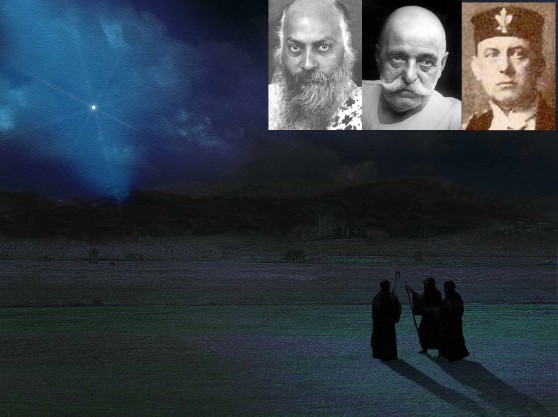
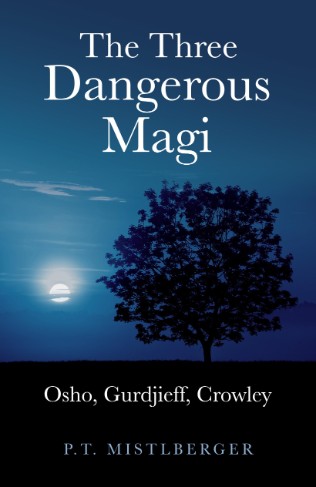
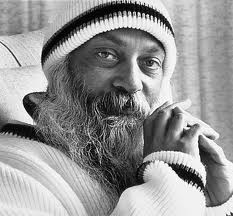
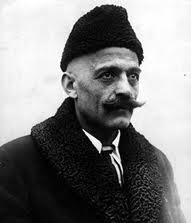
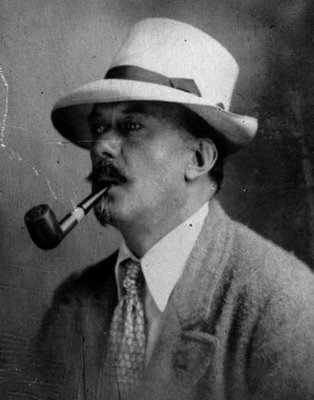
An accurate, insightful, and fascinating discussion of three of the strangest spiritual teachers ever to come to the public eye. Richard Smoley, author of The Dice Game of Shiva, and Inner Christianity
An extraordinary comparative religious study from someone who knows his stuff. Considering
its complex and contentious subject matter, this book is written not
just with deep experiential knowledge but with simplicity: one of the
most informative and enjoyable books of comparative religion I have ever
read. Fortean Times
A fascinating book about three hugely intriguing, larger-than-life, spiritual rascals. Timothy Freke, author of The Jesus Mysteries, and How Long is Now?
The Three Dangerous Magi is a magnificent book, the result of decades of research and personal immersion in the off-beat, mystical worlds of inner transformation. I can't recommend it highly enough. Andy Lloyd, author of Dark Star and Ezekiel One
An astoundingly comprehensive analysis of three of the most influential spiritual leaders of the last hundred years. It not only compares and contrasts their personalities and practices, but puts them into the context of their predecessors, milieus, and eras, resulting in astute and literate realizations that make this book both intriguing and a delight, transcending the individuals and leaving true insight into the ultimate meaning of their work. Donald Michael Kraig, author of Modern Magick
If you want a wonderfully readable book about the sensational lives of these charismatic teachers, then this is clearly the book for you. But there is far more here than simple biography. There is history and social background, psychology, religion and mysticism. It is an in-depth study of what it means to be a seeker on a spiritual path, the conflicts that this entails in respect of society and everyday life. And, from the complementary viewpoint, it examines how some teachers defy accepted conventions of morality and conduct in order to break down the conditioning which obstructs progress. It also explodes the myth that enlightenment somehow catapults one to superhuman status. Gaining Self-knowledge, and having the skill and wish to pass this on to others, unfortunately does not always mean that one is no longer prone to human failings! If you are a seeker of truth, you will inevitably be interested in all of these aspects. With the background of his own search with Osho and other teachers, his meticulously researched investigation and his intelligent appraisal of both facts and myth, P.T. Mistlberger presents a veritable feast for your enjoyment and instruction! Dennis Waite, author of The Book of One and Back to the Truth
Mistlberger's work is a fascinating (and at times painfully candid) examination of three of the twentieth century's most under-appreciated, maligned, and misunderstood holy men. Lon Milo DuQuette, author of The Magick of Aleister Crowley
Mistlberger has written a very interesting book on three extraordinary people most people would not think to link up. He has certainly done his homework. John Anthony West, author of Serpent in the Sky: The High Wisdom of Ancient Egypt
Osho, G.I. Gurdjieff and Aleister Crowley are 'dangerous Magi' because their teachings were provocative and confrontational and require discerning interpretation. As metaphysical guru-figures, all three were capable of damaging their followers as well as providing them with profound spiritual insights. P.T. Mistlberger has personal experiential knowledge of the three esoteric paths pioneered by these Magi. In this excellent book he explains why all three have contributed to the perennial wisdom tradition despite the controversy associated with their teachings. The Three Dangerous Magi is thoroughly researched and accessibly written and I recommend it unreservedly. Nevill Drury, Ph.D, author of The New Age: the History of a Movement and Stealing Fire from Heaven: the Rise of Modern Western Magic
The Three Dangerous Magi is a must read/devour for those who have a penchant for Crazy Wisdom's top 'unframers'! Mistlberger unravels and makes the three rascal awakeners come alive in all of their unconventional glory. This book itself is dangerous for those who find shelter in the known, the safe and the road well worn. It also is a call for safety in the unknowable. Be ready to be stirred to the core, turned upside down and fit together again in new ways. Satyen Raja, author of Living Ecstasy and founder of WarriorSage Trainings